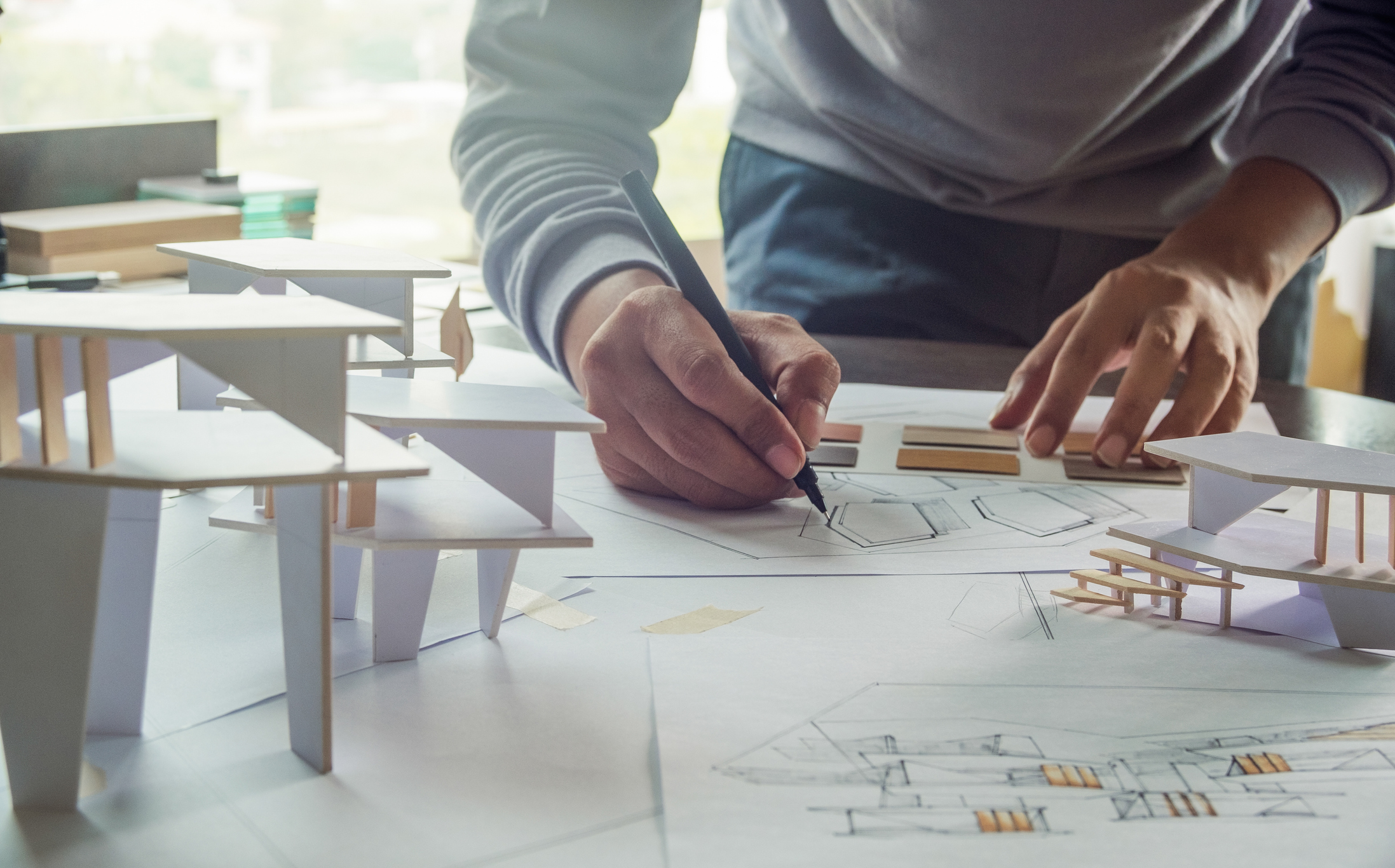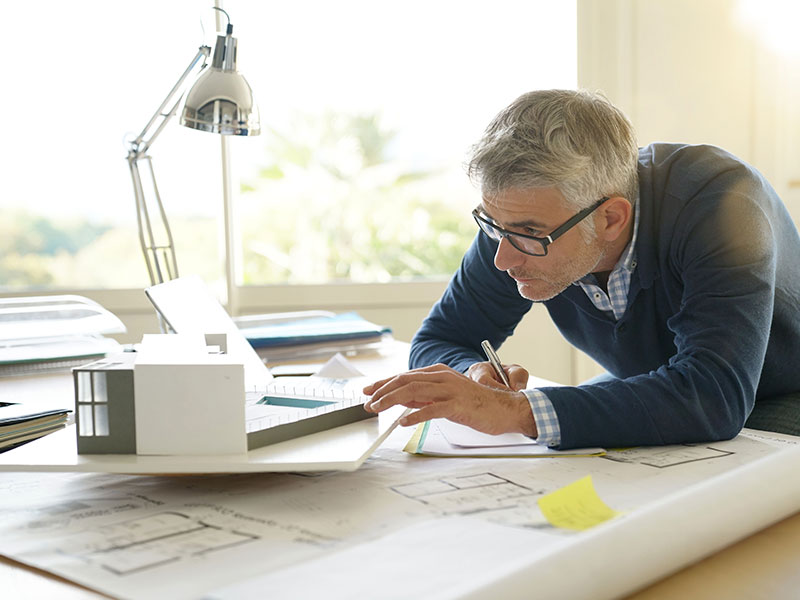Architect Tips for Planning Modern Residential Spaces
Architect Tips for Planning Modern Residential Spaces
Blog Article
Understanding the Diverse Occupation Paths Available for Aspiring Architect
As an ambitious Architect, you have a globe of profession courses waiting for you. Whether you're drawn to standard style or the nuances of lasting design, there's a specific niche that lines up with your rate of interests.
Traditional Design: Creating Frameworks and structures
Typical style concentrates on creating buildings and structures that blend performance with aesthetic charm. Your designs can mirror cultural heritage, showcasing regional customs while satisfying modern requirements.
You'll develop abilities in composing, model-making, and website analysis, enabling you to visualize and communicate your ideas successfully. Engaging with customers, you'll need to recognize their vision and translate it right into possible designs.
Furthermore, developing codes and sustainability techniques are important in your work, guaranteeing your structures are ecologically pleasant and safe. As you expand in your career, you'll locate opportunities in property, business, and even reconstruction jobs, each offering one-of-a-kind difficulties. Embracing typical architecture leads the way for a meeting job that admires the past while shaping the future.
Urban Preparation: Shaping Neighborhoods and Public Spaces
As an aspiring Architect, you can play a necessary duty as an urban coordinator, transforming just how neighborhoods work and communicate. By using area interaction techniques, you'll assure that homeowners have a voice in shaping their atmosphere. And also, integrating sustainable design principles will aid produce rooms that not only satisfy today's needs but also secure the future.
Function of Urban Planners
While several may think about designers as the sole visionaries behind buildings, metropolitan organizers play an important duty in forming the more comprehensive landscape of areas and public rooms. They analyze land use, zoning regulations, and area needs to produce sustainable settings that improve lifestyle. By teaming up with various stakeholders, you'll aid design parks, transportation systems, and residential locations that advertise social communication and availability. Urban planners likewise focus on environmental factors to consider, making sure that growths integrate eco-friendly areas and support biodiversity. Your know-how in spatial layout and community dynamics permits you to imagine future growth while maintaining cultural heritage. In this important function, you'll directly affect just how people experience their environments, making every job a possibility for positive change.
Community Interaction Techniques
Effective area involvement approaches are vital for urban planners to assure that the voices of locals are heard and valued in the preparation procedure. To cultivate meaningful dialogue, you must focus on open forums and workshops where neighborhood participants can express their ideas and worries. By actively listening and integrating feedback, you'll produce areas that show the community's demands, eventually leading to even more sustainable and successful urban settings.
Sustainable Design Principles
When developing city areas, incorporating sustainable design principles is vital for creating settings that flourish both environmentally and socially. Consider incorporating environment-friendly spaces, like parks and gardens, to boost biodiversity and enhance air quality.
Creating with water conservation in mind is also crucial-- consider rainfall gardens and permeable surface areas to handle stormwater. Involving community participants during the preparation process warranties that the areas you create meet their demands and motivate social communication. By embracing these concepts, you'll add to vivid, sustainable urban landscapes that profit everyone.

Landscape Architecture: Producing Sustainable Exterior Settings
As you explore landscape architecture, you'll uncover crucial style principles that develop attractive and practical outside spaces. Lasting methods play an important duty in making sure these atmospheres thrive while reducing environmental influence. Plus, you'll locate a selection of job possibilities that permit you to make a real distinction in how individuals engage with nature.
Style Concepts in Landscape
Understanding style concepts in landscape architecture is essential for developing lasting outdoor atmospheres that integrate with nature. You'll need to consider aspects like equilibrium, percentage, and range to guarantee your designs really feel natural and inviting. Incorporating native plants not just boosts biodiversity but also reduces water usage, making your landscape durable. Think concerning the flow of space and exactly how people connect with it; paths and seating locations should invite exploration and relaxation. Furthermore, pay interest to seasonal changes, creating with products that enhance the surroundings year-round (Architect). By prioritizing sustainability and visual appeals, you can create exterior areas that improve the neighborhood and promote wellness. Accepting these concepts will certainly set a solid structure for your job in landscape style.
Lasting Practices Overview
Lasting practices in landscape style not just focus on aesthetic appeals yet also prioritize eco-friendly health and resource preservation. You can create rooms that advertise soil health, such as practicing and making use of organic products permaculture concepts. Inevitably, these practices guarantee your styles profit both individuals and the environment for years to come.
Profession Opportunities Exploration
With a strong structure in lasting techniques, landscape architecture offers a variety of profession courses that permit you to make a meaningful effect on the atmosphere. You might work as a look at this web-site landscape developer, developing cosmetically pleasing and functional outdoor areas, or concentrate on eco-friendly reconstruction, aiding to revitalize broken communities. Urban coordinators usually collaborate with landscape engineers to develop eco-friendly rooms in city setups, improving city livability. If you're passionate about education and learning, take into consideration coming to be a landscape style teacher, inspiring future generations. Additionally, you may deal with nonprofits focused on environmental sustainability or take part in research study to innovate new practices. Each path not only forms stunning environments yet additionally fosters a healthier world for future generations.
Sustainable Design: Concentrating on Eco-Friendly Practices
As you discover your profession in style, accepting eco-friendly methods can establish you apart in a competitive area. Lasting style focuses on producing buildings that lessen environmental impact while boosting resident health. By incorporating sustainable products, energy-efficient systems, and lasting structure strategies, you'll contribute to a greener future.
Beginning by obtaining knowledge of eco-friendly accreditations like LEED or BREEAM, which can bolster your qualifications. Take into consideration exactly how all-natural light, air flow, and thermal efficiency can optimize style. Collaborate with engineers and ecological professionals to innovate services that minimize waste and save sources.
Do not neglect the significance of neighborhood participation-- engaging local stakeholders can influence styles that balance with the atmosphere. As customers increasingly prioritize sustainability, your knowledge in green techniques will certainly not only attract projects however likewise satisfy your enthusiasm for visit site accountable style. Welcome this critical facet of the career, and see your career flourish.
Historic Conservation: Safeguarding and Recovering Cultural Heritage
While you begin on your building trip, think about the essential role of historic preservation in maintaining our cultural heritage. This field concentrates on the defense and restoration of considerable structures, websites, and frameworks that inform the tales of our past. By taking part in historical conservation, you'll assist protect the building tradition that forms area identification.
As a historic conservation Architect, you'll analyze historic value and analyze the problem of frameworks. You'll work carefully with chroniclers and conservationists to guarantee authentic reconstruction methods are used. This occupation path permits you to blend creative thinking with study, allowing you to design remedies that respect original products and workmanship.
Your work not just adds to sustainability by recycling existing structures but additionally promotes a feeling of pride within communities. Accepting this course will aid you become a guardian of background, maintaining the stories and appearances that enhance our lives.
Inside Architecture: Enhancing Indoor Spaces
Historic conservation and indoor design both share a dedication to enhancing the developed setting, but they concentrate on various aspects. While historic conservation stresses maintaining a structure's cultural and historic worth, indoor architecture nos in on maximizing indoor spaces for performance and appearances.
As an aspiring Architect, you'll locate that interior architecture allows you to blend imagination with technical abilities. You'll make spaces that not just look great but additionally promote convenience and efficiency. This field includes comprehending just how light, shade, and products interact within an area, impacting state of mind and functionality.
You'll function on different jobs, from domestic homes to commercial workplaces, making certain that each atmosphere fulfills the demands of its occupants. By focusing on customer experience, you can change interiors into functional and inspiring rooms, making a significant influence on just how people communicate with their surroundings. Embrace the possibility to enhance interior environments and form the means people live and work.
Industrial Design: Merging Capability With Aesthetics
Commercial style plays a necessary function in producing products that flawlessly mix aesthetic appeals with functionality, making sure that what you utilize daily is not just visually enticing however additionally functional. As an aspiring Architect, you might involve on your own in this area, focusing on making whatever from furniture to customer electronic devices. Your job involves recognizing individual demands, materials, and making processes, enabling you to create cutting-edge services that boost everyday experiences.
In commercial design, you'll frequently work together with designers, marketers, and suppliers, guaranteeing that your layouts are not only attractive but additionally possible. This occupation path provides a vibrant setting where creativity fulfills usefulness, making it a fulfilling option for designers interested in forming the products of tomorrow.
Often Asked Inquiries
What Educational Credentials Do I Need to Become an Engineer?
To come to be an engineer, you'll need a specialist degree in design, usually a Bachelor's or Master's. Furthermore, you'll have to finish a teaching fellowship and pass the Architect Enrollment Examination to practice lawfully.
Are There Certification Demands for Different Building Job Paths?
Yes, there're accreditation needs for different building paths. Architect. You'll require to pass tests, full teaching fellowships, and occasionally go after specialized training, relying on your chosen emphasis, like landscape design, metropolitan layout, or historical preservation
What Software Application Skills Are Crucial for Architects Today?

How Can I Gain Practical Experience While Studying Design?
You can get useful experience by interning at architectural companies, getting involved in design competitors, volunteering for area tasks, or working together with classmates on real-world jobs. These opportunities enhance Homepage your skills and build valuable links in the industry.
What Job Opportunities Exist Outside Traditional Architecture Firms?
You can check out numerous work possibilities outside standard architecture companies, like urban preparation, interior decoration, landscape design, building monitoring, property advancement, or perhaps roles in sustainability consulting. Each deals one-of-a-kind challenges and benefits.
Whether you're drawn to standard design or the nuances of lasting style, there's a niche that lines up with your passions.When developing urban areas, including lasting layout principles is vital for producing atmospheres that prosper both environmentally and socially.As you discover landscape architecture, you'll find important style principles that produce attractive and functional exterior areas.Understanding style concepts in landscape style is essential for creating lasting outside settings that harmonize with nature.In commercial design, you'll frequently collaborate with marketers, makers, and designers, making certain that your layouts are not just gorgeous but likewise viable.
Report this page